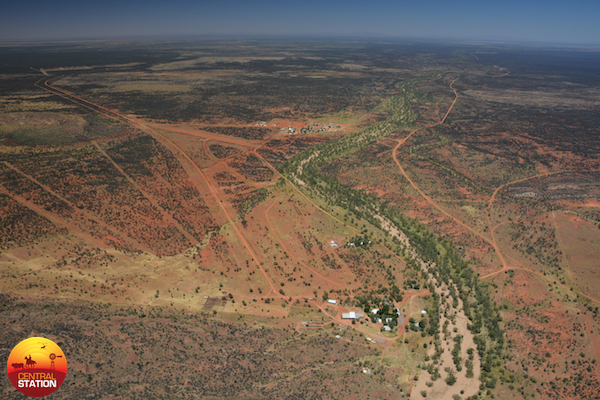10 reasons to work in Central Australia
Host: Kadaitcha Pastoral Company
Written by Sam Chisholm – Owner, Kadaitcha Pastoral Company.
Everyone loves a good top ten and Central Station is no exception. Given the lack of voice coming from the middle of Australia, this list will fill you in on everything you’ve been missing from the Outback’s best-kept secret.
1. Bloody Good Beef
Who’s got the best beef? This question is the principal point of contention around all the campfires and pubs of Outback Australia. It’s caused arguments that have transcended generations, started many a bar-room brawl, and even ruined the odd marriage.
Every person you meet has an opinion on whose beef is the best and will press that upon you until you either agree or declare to be vegan. To save you from turning into a soybean, I’ll point out a couple of facts which will allow you to keep a clear head when appraising your next steak:
You only eat your own beef when you go to the neighbours place for a BBQ so, to say “Our beef is the best” is just paying the neighbours compliments. There are a lot of individual characteristics and opinions that make “good beef”. Taste, tenderness, fat content, breed, knife sharpness, hunger level, drunkenness etc. Don’t allow yourself to get bogged down in the specifics – “Good beef” relates to the beef experience as a whole not individual characteristics. “Good beef” generates an emotional response from the consumer such as salivation, murmurs of appreciation, and belly rubbing. If it doesn’t then the beef is just average. If it generates a physical response the beef is probably off . . .
Now while I can’t reveal who has the ‘best beef’ for fear of upsetting the readership (trust me as a helicopter pilot I know who has the best beef!) I will tell you that Central Australia, as an aggregate, is right up the top. Rest assured anyone coming to sample some desert beef will not go home disappointed.
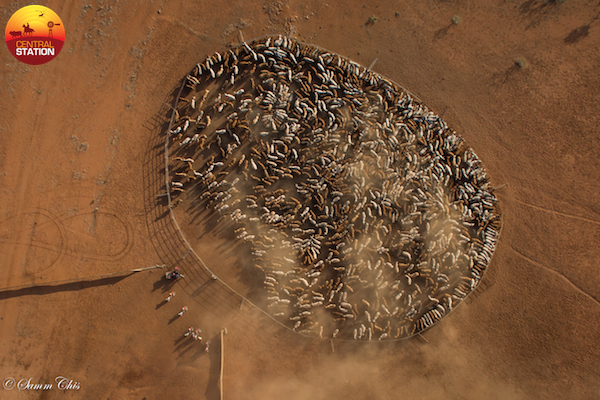
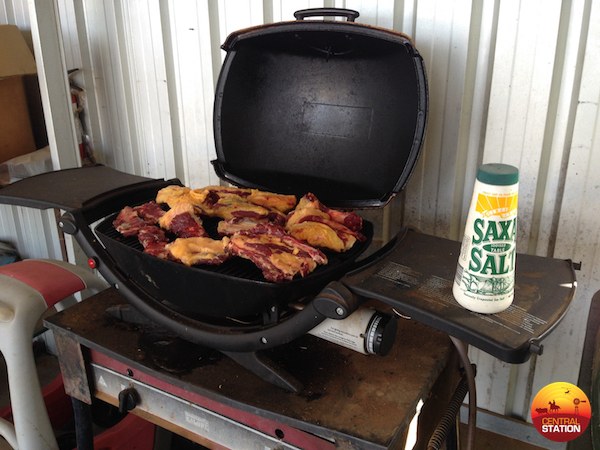
2. No Crocodiles
The Australian saltwater crocodile is the largest of all living reptiles reaching up to six metres in length and weighing over a tonne. As Steve Irwin once stated: “Most prey are ambushed and then drowned or swallowed whole. Crikey” We’ve all seen Crocodile Dundee – the death roll is real.
Unfortunately, ‘prey’ includes station livestock such as cattle and hapless jackaroos fixing the flood fences after the wet season. I once heard a cattle station manager in the top-end estimate up to 300 head per year and at least one unsuspecting first year jackaroo were gobbled up by these hungry mud-lizards.
I’ve seen some of the toughest ringers in the game turn green at the mere mention of going flood fencing. They can often be found volunteering for some of the more mind numbing station jobs such as cleaning troughs, greasing saddles, and painting gates when fencing time comes around.
The good news is that Central Australia has been certified ‘croc free’ by the relevant authorities and due to the lack of ‘flooding’ we keep fencing time to a minimum.
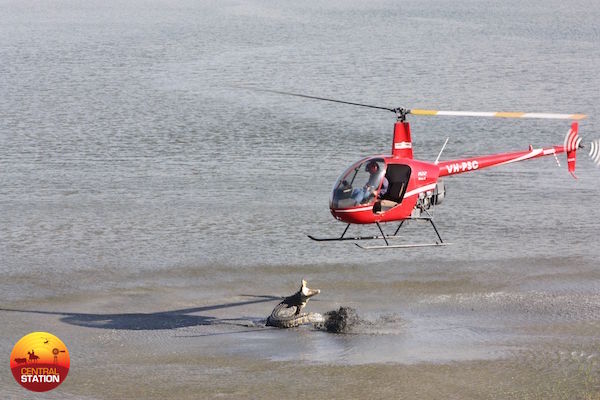
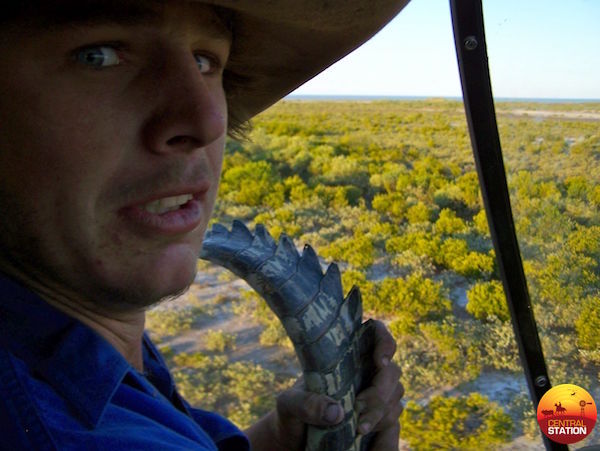
3. Lasseter’s Reef
More good news! The fabulously rich gold deposit discovered by Harold Bell Lasseter in 1929 is still at large. Lasseter purported the find to be in a remote and desolate corner of Central Australia, which thankfully applies to most of the region meaning, the gold could be ANYWHERE!
Central Australian ringers have often been falsely accused of having poor eyesight. The truth of the matter is that they have one eye on the cattle and the other on the ground in the event that Lasseter’s reef decides to show itself. Just think of all the XXXX Gold a few nuggets could buy!
4. Big Bullocks
Due to the relatively low rainfall in Central Australia, less than 250mm per year, the nutrient content of the soil is comparatively high because the soil hasn’t been leeched of all its goodness. Good soil makes good grass, and good grass makes big bullocks.
Central Australian producers traditionally grew bullocks so big they wouldn’t fit on a double decker. I know people that have had to grease up the 48-inch race with oil so the bullocks can slide along better. Loading eight a pen with no room to swing the gate, yep that’s desert beef for you. Now the markets have changed and the production adjusted accordingly but once in a while an old man will wander in leaving you in awe. As one backpacker recently put it “Is that a bloody dinosaur?”
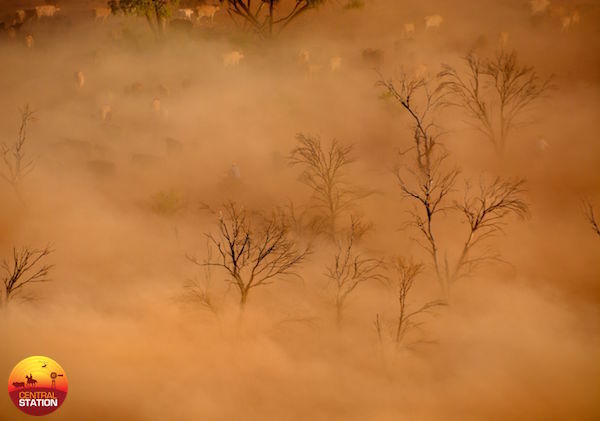
5. Thorny Devils
No, no, not horny devils. Although the Thorny Devil measures 4-6 inches long and puffs itself up to seem bigger than it actually is, this little critter specialises in eating ants not dropping pants. In fact it can eat up to 3000 ants in a single meal washed down with moisture absorbed through groves between their thorns. Probably the coolest show and tell ever to hit the School of the Air airwaves.
6. Wild Camels
Introduced in the 19th century from Afghanistan for transport and construction during the colonisation of Central Australia, these animals have grown in number and roam free from Birdsville to Broome. Whilst the animals cause general havoc on cattle stations destroying fences, watering points, and air-conditioners, it’s not all bad news. Mustering wild camels, whilst a tedious operation (generally considered not commercially viable) can provide a decent amount of pocket money for jackaroos willing to catch a few in their spare time. This pocket money can then be used for purchasing XXXX gold cans (Milton mangos), which are a fantastic accompaniment to camel steaks on the BBQ.
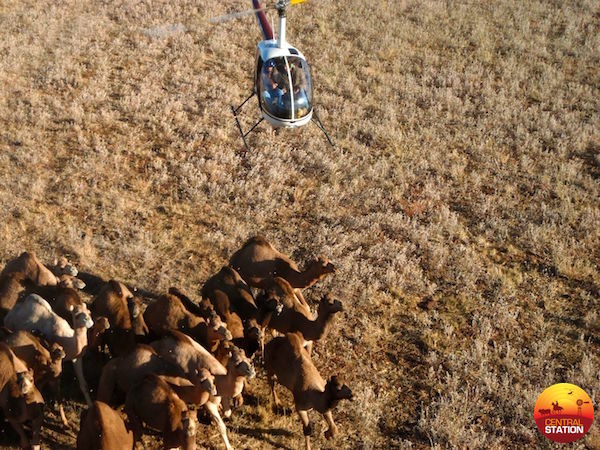
7. Fast track to being a local
Unlike anywhere else in Australia, there is a shortcut to becoming a local in Central Australia. There is an unwritten rule that once you have seen the Todd River run three times you will be automatically and unconditionally accepted as a local.
The only catch, well, the Todd can run three times in a month or three times in a century.
8. Aileron and Harts Bush Sports Weekends
You think the Calgary Stampede is big? Well think again. Kicking off Easter time is the Aileron Bush Weekend, which boasts what is probably the only Mexican Donkey Race outside of Mexico. Those wild asses can clock in at 69km/hour so you can bet this event is not for the faint of heart.
The Harts Range Races in July have everything from Stock-horse Races, Rodeo, Gymkhana, to Sports events including Running Races, Lizard Races, Ladies Cow Tail Toss, Jelly Wrestling, Tug of War, and a Jumping Castle for the children.
9. Min min lights
A Min min light is a small fuzzy white light with a reddish tinge known to approach or follow people at night. Found in the central parts of Australia including Boulia, the Channel Country, Plenty highway, and even Brewarrina (although the word of a New South Welshman is somewhat dubious). This unusual light phenomenon was first reported back in 1838 and speaking from experience is as real as Mum’s gravy on a Sunday roast. The Min min lights are very shy and will disappear rapidly when shot at or chased. They can keep pace with a fast moving vehicle and are considered a comfort by road-train drivers thundering through the night with only a single sided Slim Dusty tape and a packet of jelly beans to keep them awake.
10. Finke Desert Race
A two day, 458km, multi terrain race for cars, bikes, and buggies is known as Australia’s fastest and greatest desert race held over the Queens Birthday long weekend every year. Some ambitious ringers test out the skills learnt chasing bullocks through the scrub and enter the race whilst the rest perch up on the biggest sand dunes around and get stuck into the esky. From whatever viewpoint you decide on, it’s an event not to be missed.
